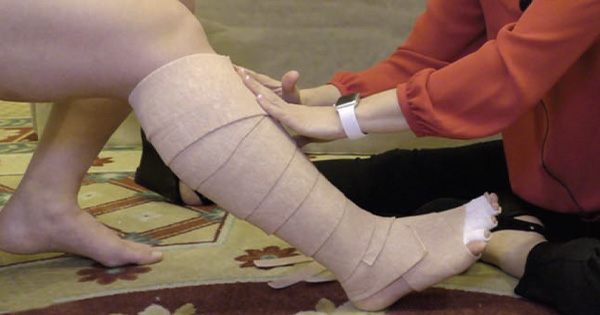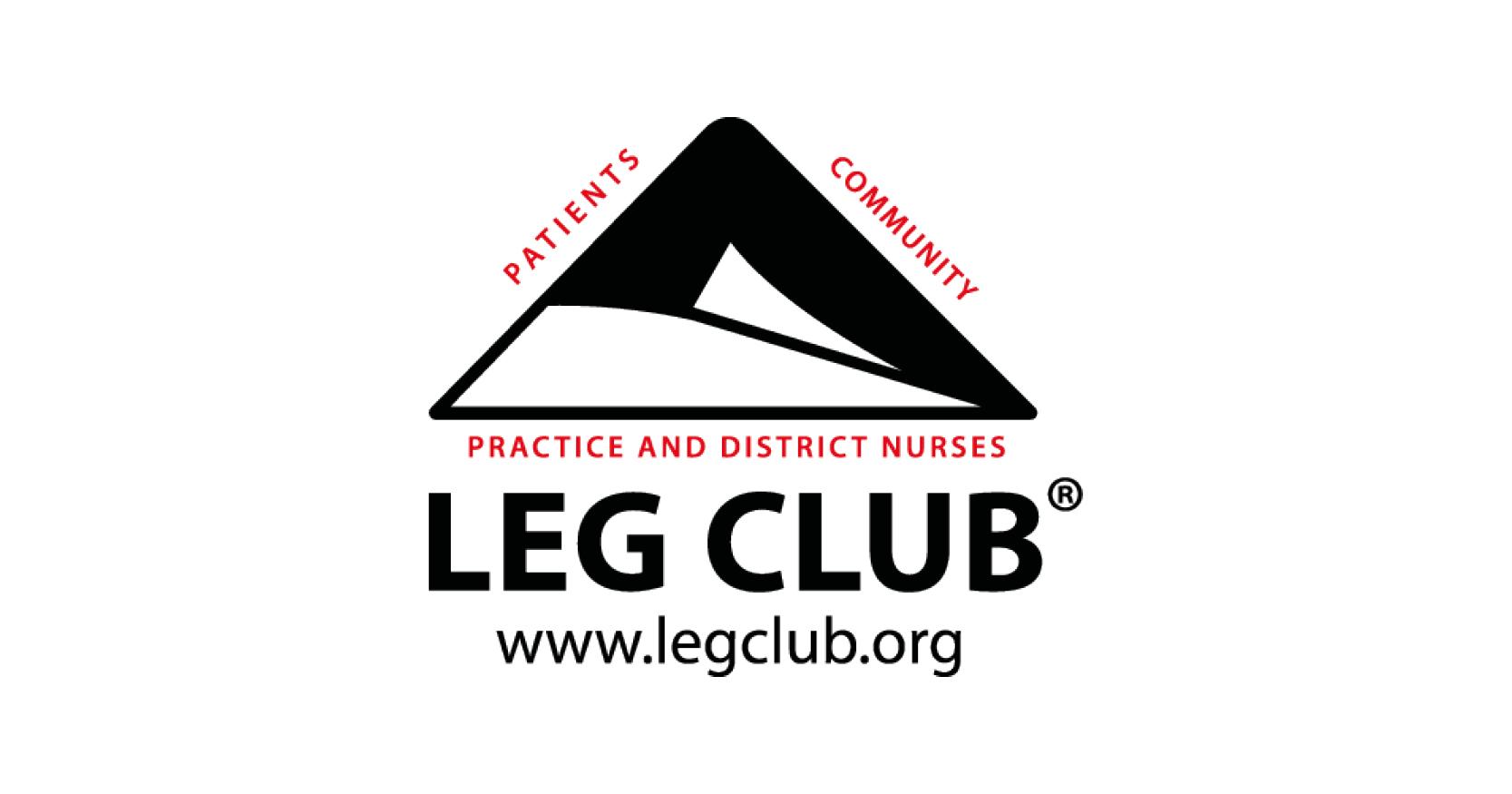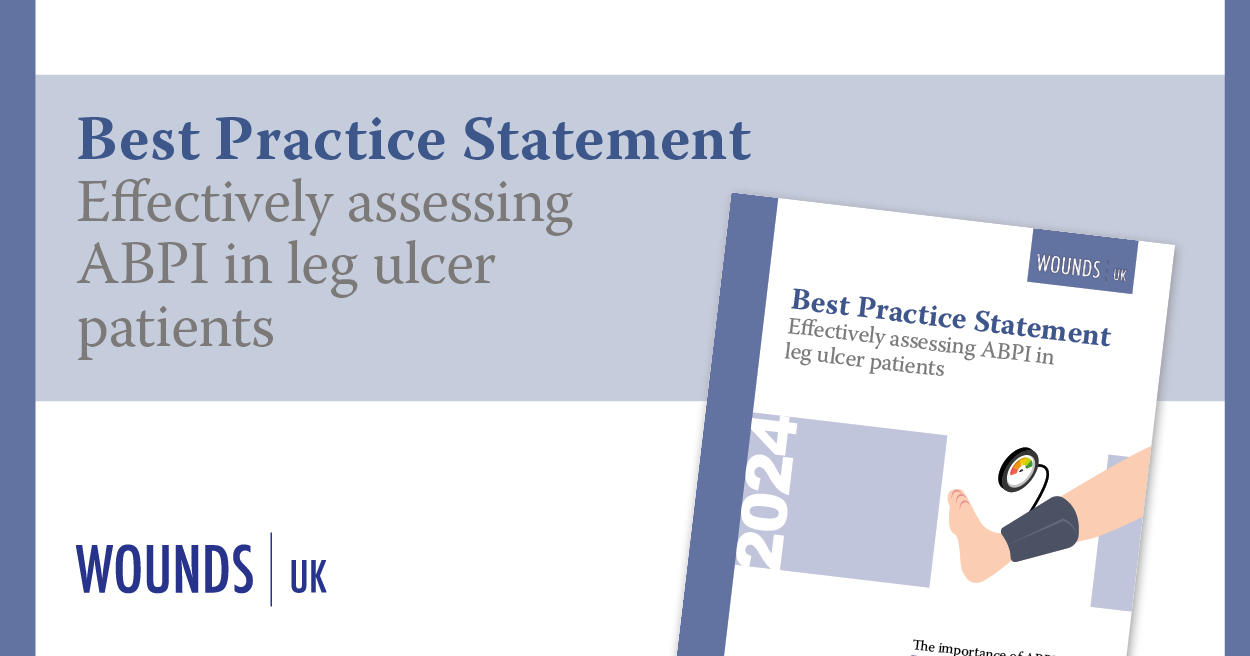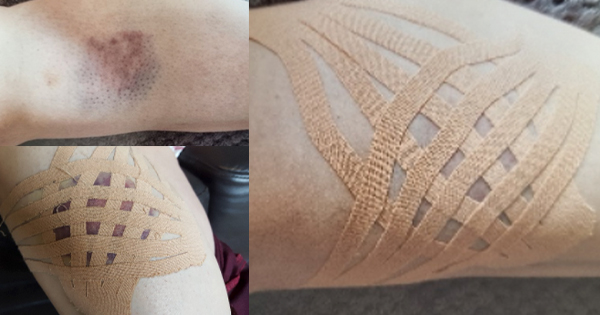For the majority of people with a wound, the process of healing is straightforward. However, for some patients, healing is prolonged and accompanied by major symptoms, such as pain, exudate and odour, which adversely affect their quality of life (EWMA, 2008).
The normal healing process can be divided into four overlapping and well-orchestrated phases: haemostasis, inflammation, proliferation and maturation. This process can be interrupted at any stage due to a variety of intrinsic and extrinsic inhibitory factors (Vowden, 2011). An understanding of the physiology of normal wound healing and its relevant phases allows clinicians to be better placed to intervene and provide management and treatment solutions when problems occur.
What factors delay wound healing?
Wound aetiology, patient age and the presence of significant co-mordibities can all impact on the healing process, as do factors such as wound size and depth, location, wound duration and the presence of a heavy bioburden (Vowden, 2011). However the reason for delayed healing may not be related solely to an abnormality within the wound itself. Available healthcare resources, product availability and the skill and knowledge of the attending clinician may also influence outcomes (Box 1) (Vowden, 2011).
Although delayed healing appears to be common, it is frequently not recognised at an early stage and can pose a major problem. This can have a negative impact on clinical workloads and use of healthcare resources (Vowden, 2011). The earlier the wound healing problems are detected, the better the outcome will be for the patient (Harding et al, 2005).
When treating a patient with a wound, it is essential that a thorough patient history is taken and underlying conditions that could influence healing are diagnosed. Recognising non-healing requires careful reassessment over several weeks while delivering a treatment plan to move the wound towards healing (Troxler et al, 2006).
If the wound fails to progress (eg reduce in size or there is no improvement within the expected timeframe) it is essential to reassess the patient and alter the treatment plan (Int Consensus, 2011).
Infection and wound healing
Infection is the single most important contributory factor in delayed wound healing (WUWHS, 2008). Most wounds contain micro-organisms (particularly bacteria), yet the majority are not infected. The potential for bacteria to produce harmful effects is influenced by the ability of the patient’s immune system to combat the bacteria as well as the number and type of bacteria present. A wound infection continuum — ranging from contamination, colonisation, critical colonisation through to infection — is a useful aid to understanding the level of bacteria in the wound and when intervention is required to prevent deterioration and to facilitate wound healing (WUWHS, 2008) (Figure 1).
Early diagnosis of infection reduces the risk of complications, leading to improved outcomes and reduced treatment costs (White, 2009). If signs of spreading or systemic infection are seen, rapid intervention is required with antimicrobial dressings and/or systemic antibiotics (Vowden et al, 2011).
Selecting a topical antimicrobial dressing
When choosing an appropriate antimicrobial dressing, the priority should be to regain control of bacterial growth. In addition to reducing bacterial load, clinicians need to consider how different antimicrobial products support moist wound healing, manage exudate levels and assist wound bed preparation (Vowden et al, 2011).
Role of silver
The topical antimicrobial agent silver has been used for hundreds of years in wound care. In recent years, a wide range of wound dressings that contain elemental silver or a silver-releasing compound have been developed. All silver-containing wound products only exert antimicrobial effects when they release the ionic form of silver (Ag+). This usually occurs when the dressing comes into contact with wound fluid (Int Consensus, 2012).
Silver ions are active against a broad range of bacteria, fungi and viruses (Int Consensus, 2012), including antibiotic resistant bacteria, such as meticilin-resitant Staphylococcus aureus (MRSA) and vancomycin-resistant Enterococci (VRE). In addition, in vitro studies using experimental models of biofilms suggest that silver may kill bacteria within the biofilm matrix and reduce bacterial adhesion, destabilising the matrix (Chaw et al, 2005; Percival et al, 2008).
Appropriate use of silver dressings
A recent consensus on the appropriate use of silver dressings described the main roles of silver dressings in the management of wounds to be the reduction of bioburden and to act as an antimicrobial barrier (Int Consensus, 2012).
Whenever a silver-containing dressing is used to improve healing or to prevent infection, the rationale should be fully documented in the patient’s health records and a schedule for review should be specified.
The 2012 consensus recommends that silver dressings be used initially for a two week ‘challenge’ period. At the end of the two weeks, the wound, the patient and the management approach should be re-evaluated. If after two weeks, the wound has:
- improved, but there are continuing signs of infection, it may be clinically justifiable to continue to use of silver dressings with regular review
- improved and there are no longer signs or symptoms of infection, the silver dressing should be discontinued
- not improved, the silver dressing should be discontinued and the patient reviewed and a dressing containing a different antimicrobial agent initiated, with or without systemic antibiotics.
Elevated protease activity (EPA) and wound healing
Wounds that are not healing despite correction of underlying causes, exclusion of infection and optimal wound care may be stuck in a persistent inflammatory state (Vowden, 2011).
In normal wound healing, there is an initial rapid rise in protease activity, which starts to reduce by about day five (Figure 2). In non-healing wounds, protease activity reaches higher levels and persists for longer (Int Consensus, 2011). If left unchecked, sustained excessive protease activity can start to destroy the healthy extracellular matrix and newly formed tissue, preventing the wound from progressing to the proliferative stage (Int Consensus, 2011).
Studies have found high levels of protease activity in a range of non-healing wounds, including venous leg ulcers, diabetic foot ulcers, pressure ulcers and trauma wounds (Ladwig et al, 2002; Beidler et al, 2008; Liu et al, 2009; Serena et al, 2012). This suggests that high protease activity is related to a problem with the healing process itself rather than to the underlying cause.
Chronic wounds with (EPA) have a 90% probability they will not heal (without appropriate intervention) (Serena et al, 2012). However, approximately 28% of non-healing wounds have EPA (Serena et al, 2012). In addition, there are no visual signs to detect EPA and clinicians are not able to distinguish between normal inflammation (seen at the initial stage of wounding) and inflammation caused by abnormally high protease levels (Young, 2012).
Elevated protease activity has therefore been identified as a suitable biochemical marker for predicting poor wound healing in acute and chronic wounds (Int Consensus, 2011). In the past, protease activity has been measured in the laboratory and used mainly for research purposes. More recently, a new technology has become available that allows clinicians to identify EPA in the wound bed. WOUNDCHEKTM Protease Status (Systagenix) is a rapid, point of care test method that is:
- Easy to use (carried out in four steps)
- Able to detect EPA in 15 minutes
- Able to identify which wounds to treat with protease-modulating therapy.
Once detected, and in the absence of clinical signs of infection, reduction in protease activity within the wound should become a clinical priority.
For wounds that are critically colonised or infected, the clinical priority should be to reduce the wound bioburden using topical antimicrobials and/or systemic antiobiotics. If the wound continues to be slow to heal, EPA should be measured and appropriate treatment initiated (Figure 3).
Protease-modulating therapy: collagen/ORC dressings
Dressings containing collagen/oxidised regenerated cellulose (ORC) are classified as protease modulating, but not all dressings within this category will work in the same way (Young, 2012).
When a dressing comprising a collagen/ORC matrix (eg PROMOGRAN®/PROMOGRAN PRISMA®) comes into contact with fluid/exudate in the wound, it absorbs the liquid to form a soft gel. This
allows the dressing to conform to the shape of the wound and come into contact with all areas of the wound.
The gel physically binds to and inactivates damaging proteases, both matrix metalloproteases (MMPs — in particular MMP-2 and 9) and elastase that are present within the wound. In addition, it binds with naturally occurring growth factors and prevents them from being broken down by damaging proteases. As the matrix slowly breaks down, the growth factors are released back into the wound in an active form, while the damaging proteases remain inactive (Cullen and Ivins, 2010).
Collagen/ORC dressings have been shown to reduce the activity of proteases, as well as levels of inflammatory cytokines in a range of chronic wounds (Cullen et al, 2002; Cullen et al, 2004; Smeets et al, 2008).
CASE STUDIES IN PATIENTS WITH COMPLEX WOUNDS
This document contains a number of case studies in patients with a range of complex wounds where healing has been delayed due to infection and/or EPA.
These studies show that early and accurate detection of infection and EPA as part of a structured approach to wound assessment and management using targeted interventions (eg topical antimicrobials or protease modulating dressings) can potentially result in a reduction in overall treatment duration, resource use and costs. The case studies in this document evaluate the use of the following dressings:
- SILVERCEL® NON-ADHERENT
- ACTISORB® SILVER 220
- PROMOGRAN® AND PROMOGRAN PRIMSA®
SILVERCEL® NON-ADHERENT
SILVERCEL® NON-ADHERENT is a sterile absorbent antimicrobial dressing that is suitable for use in moderately to heavily exuding wounds, which are infected or at increased risk of infection.
The dressing has an outer perforated film layer designed to prevent adherence to the wound and the shedding of fibres (Clark et al, 2009a; 2009b). The central absorbsent core of the dressing is made up of a combination of highly absorbent high G calcium alginate and carboxymethylcellulose (CMC) and silver-coated fibres. The dressing delivers antimicrobial action through the release of silver ions (Ag+) on contact with fluid (eg exudate).
Laboratory and clinical studies have indicated that the dressing has
- Good antimicrobial activity against many common wound pathogens (Lansdown, 2002).
- High absorbent capacity, even in the presence of blood
- Good tolerability
- Low adherence
- Suitability for a wide range of wounds (Teot et al, 2005; Di Lonardo et al, 2006).
In addition, SILVERCEL® NON-ADHERENT has been evaluated in a case series of patients with locally infected wounds, complex medical problems and a history of recurrent wound infections (Ivins et al, 2010). The dressing was found to be easy to apply and remove, did not cause trauma and no fibres were seen in the wound bed. Several patients experienced a reduction in wound pain during use of the dressing and, as a result, needed less analgesia (Ivins et al, 2010).
ACTISORB® silver 220
ACTISORB® SILVER 220 is a sterile primary dressing comprising an activated charcoal cloth, impregnated with silver within a spun bonded nylon sleeve. It may be used in the treatment of most types of chronic wounds, but is particularly recommended for the management of malodorous, infected wounds.
When applied to a wound, the active charcoal layer absorbs bacteria and locally released toxins as well as volatile amines and fatty acids responsible for wound odour (Kerihuel, 2010). The silver in ACTISORB® SILVER 220 has been shown not to cause any detrimental effect to cell growth, while providing an antimicrobial effect (Nisbet et al, 2011). An in vitro study found that the bacteria and endotoxins absorbed by the activated charcoal are destroyed by the silver within the dressing, preventing them from returning to the wound (Verdu et al 2004). The perforated outer nylon sleeve of the dressing allows exudate to flow freely through to a secondary dressing, while facilitating dressing removal by minimising adherence to the wound.
ACTISORB® SILVER 220 has been evaluated in a number of laboratory and clinical studies and has been shown to have:
- good antimicrobial activity (Furr et al, 1994; Jackson, 2001)
- good bacterial endotoxin binding for odour control
- good dressing tolerability (Stadler et al, 2002).
ACTISORB® SILVER 220 was also evaluated in two separate randomised controlled trials in patients with chronic venous leg ulcers and pressure ulcers (Kerihuel, 2010). The study showed that there were differences at week 1 in both studies, with a greater reduction in wound area in the treatment group compared with the control dressing. There was also good dressing tolerability with fewer dressing-related adverse events in the ACTISORB® SILVER 220 groups.
Evidence from non-controlled studies, large population surveys and case studies also support the clinical benefit of using ACTISORB® SILVER 220 in various clinical situations (Kerihuel et al, 2003; White, 2001).
PROMOGRAN®/PROMOGRAN PRISMA®
PROMOGRAN® is a sterile, freeze-dried composite of 55% collagen and 45% oxidised regenerated cellulose (ORC). PROMOGRAN PRISMA® matrix is a freeze-dried composite of 55% collagen, 44% oxidised regenerated cellulose (ORC) and 1% ORC/silver. PROMOGRAN®/PROMOGRAN PRISMA® matrix is designed to promote an optimal healing environment and ‘kick start’ the healing process (Cullen and Ivins, 2010). PROMOGRAN PRISMA® also provides protection against infection (Cullen et al, 2006).
With PROMOGRAN®/PROMOGRAN PRISMA® stalled wounds have been shown to close faster and cost-effectively (Cullen et al, 2006; Lazaro-Martinez et al, 2007; Tacconi and Vagnoni, 2009).
The clinical efficacy of PROMOGRAN®/PROMOGRAN PRISMA® compared with standard care has been shown in a number of randomised controlled trials (Veves et al, 2002; Lazaro-Martinez et al, 2007; Nisi et al, 2005; Vin et al, 2002; Wollina et al, 2005; Gottrup et al, 2011; Lanzara et al 2008).
In addition, a recent study confirmed that the clinical efficacy of PROMOGRAN®/PROMOGRAN PRISMA® increased when targeted to wounds with EPA. Seventy-seven percent of venous leg ulcers with EPA responded to PROMOGRAN®/PROMOGRAN PRISMA® treatment by week four (Cullen et al, 2011).






